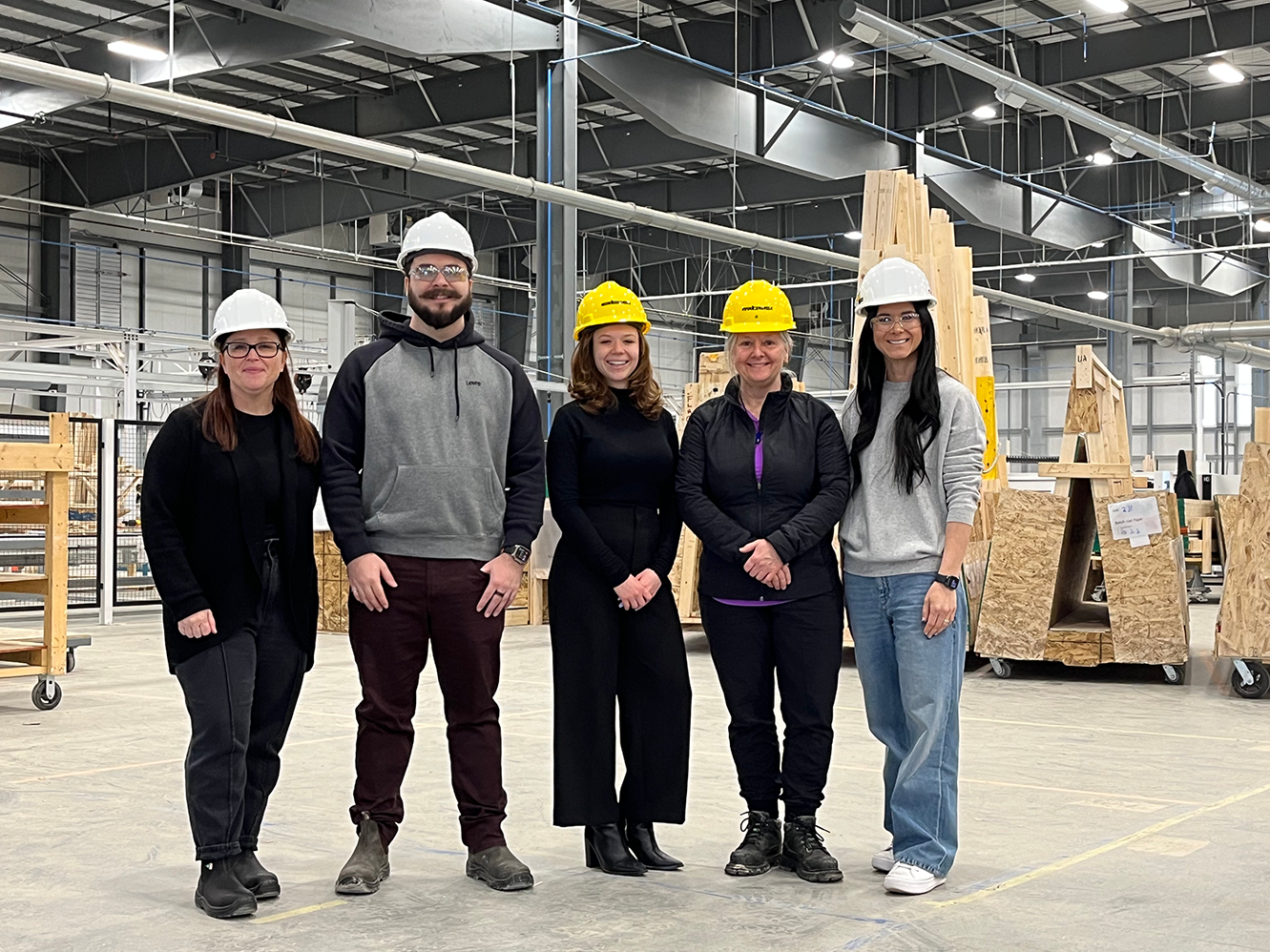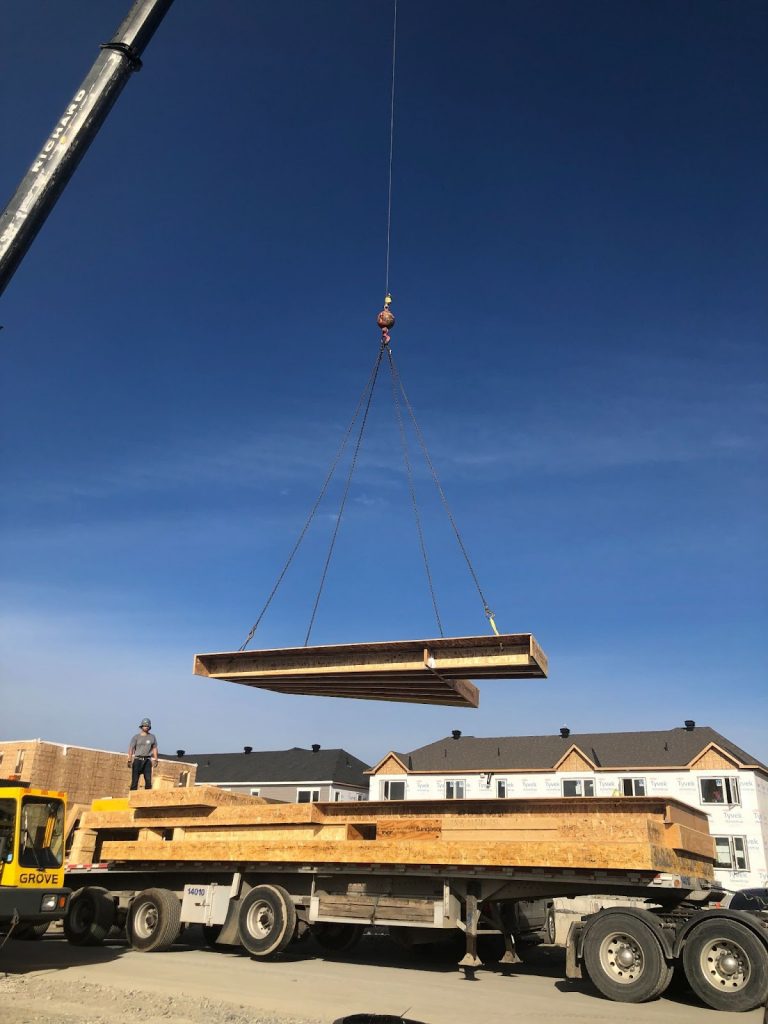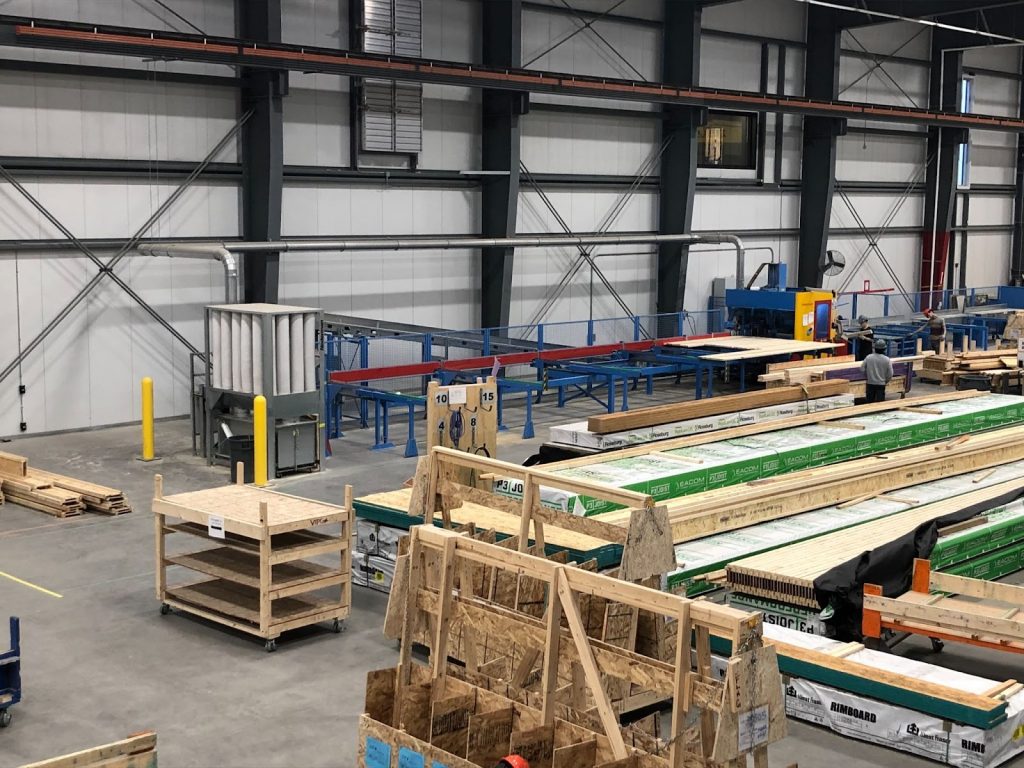Addressing Housing Affordability
Architecture school research partnership aims to improve robotic fabrication for housing
June 21, 2023
Automation offers the potential to build much-needed affordable housing more quickly, but uptake in the construction industry has been slow.
To help identify impediments and test solutions, the Azrieli School of Architecture & Urbanism at Carleton University recently teamed up with the Advanced Building Innovation Company (ABIC) in Ottawa on a research project.
Master of Architecture student Corina Amarioarei was on the research team. She worked at ABIC’s manufacturing plant from October 2022 to May 2023, where she also took part in designing a prototype for a pre-manufactured house suitable for the Canadian climate.
“ABIC is equipped with cutting-edge software and market-leading building science,” says Amarioarei. “However, they partnered with Carleton in hopes of uncovering ways to simplify their design process, especially the amount of different software used.
“The collaboration between the school and their company also brought about the exciting opportunity to design a direct-to-consumer bungalow that is created with prefabrication and material efficiency in mind,” she says. “I feel extremely lucky to have been part of this innovative company.”
ABIC designs and manufactures prefabricated wall, floor, and roof assemblies for residential construction, using state-of-the-art automated and robotic fabrication methods.
Associate Professor Sheryl Boyle is the lead academic supervisor and Assistant Professor Jerry Hacker is the co-academic supervisor. The project is expected to continue during the 2023-24 school year.

Left to right: Natalie Hartley (Vice-President, Human Resources at ABIC), Adam Renaud, (Manufacturing Design Manager, Systems), Corina Amarioaeri (Carleton Mitacs student), Associate Professor Sheryl Boyle, Nisha Cairo (ABIC President)
“The research agenda is designed to help the traditionally disparate parties involved in the design and construction process to come together and re-imagine how the creative design process could become more fully integrated with manufacturing processes without falling prey to the potential limits of the machinery and robotic systems,” says Dr. Boyle.
“The emphasis is on identifying antiquated design and building processes,” she says. “By doing this, the research will uncover the barriers in the design process and their translation to high-precision software.”
As leaders of the design and construction process from initial sketch through finished construction, architects are an essential part of the eventual manufacturing, fabrication, and construction process, notes Boyle.
“Essentially, this research tackles a long-standing problem with the conventional construction industry,” she says. “It has been notoriously difficult to provide a process and a product that is high quality, constructed on time, and affordable. People seem to understand that new materials must be embraced, but when it comes to processes and methods, there is more hesitation.”
New processes are part of the solution to contemporary needs, agrees Hacker. “There is a shortage of housing in Canada, and housing affordability has reached a near crisis point,” he says.
“Taken together, business-as-usual strategies for providing housing are positioned to leave vulnerable groups without the basic right to adequate and affordable housing,” he says. “By re-imagining an interdisciplinary process of ideation, design and manufacturing can begin to use a shared language with similar goals guided by efficiency, economy, elegance, ecology, and equity.”


The $30,000 project cost is shared between ABIC and MITACS, an agency that connects university research with the private sector. The intent is for the research to consider the broad opportunities of robotics for architecture and construction while making a design specific to the Ottawa climate and urban patterns.
Amarioarei worked with her academic supervisors, the senior management of ABIC, its head of design and manufacturing, and the floor personnel responsible for production.
“I learned how ABIC functions and their typical workflow,” she says. “I uncovered how a project goes from architect to finished product and all the rework in between.”
She studied existing processes, highlighting areas needing improvement and areas that could use reevaluation. With the team, she also explored the relationship between the design and the manufacturing software to uncover which software is most compatible.
One of the issues with robotic manufacturing is that nearly every party involved in the process, from the architect to the manufacturer, is using different software through the design process. As a result, as many as 20 various software programs can be involved between the design sketch and the robot.
The result, notes Hacker, is akin to the game of “broken telephone,” resulting in information loss, gaps, repetition, and translation between the successive software programs a design moves through.
“This process is extremely cumbersome,” he says. “It is also part of the reason why there is such a slow uptake of these processes by the architecture, engineering, and construction industry.
“These problems are important to resolve because they hold back the adoption of innovative methods important to meeting contemporary housing needs.”

The goal was to take the lessons learned about both software and manufacturing and use the knowledge to design a new home in collaboration with the design, engineering, and manufacturing team so that there was a continuous conversation between designers and builders.
“I have collected a massive amount of knowledge throughout the two terms,” says Amarioarei. “The most interesting part for me was the unique experience of designing a home that could one day make it to the housing market.”
According to Hacker and Boyle, if a re-imagined process can leverage new robotic manufacturing protocols developed with design processes tailored for this type of manufacturing and assembly, the subsequent construction could be carried out in factory-controlled conditions with robotic levels of precision.
The result: A high-quality, affordable house that can be constructed in a much quicker timeframe.
“As the quarterbacks, architects must develop skills and knowledge around emerging methods of fabrication, but perhaps more importantly, architects must be leaders when it comes to finding innovative and creative solutions to problems such as the affordable housing crisis,” says Boyle.
“We cannot use processes invented for house framing in the mid-20th century that require significant manual labour, wasteful material flows, and outdated energy models,” she adds.
“Design is a process, and it cannot operate in a silo – it must be integrated with the entire workflow from idea to finished built form, and today, that involves automated and robotic fabrication.”